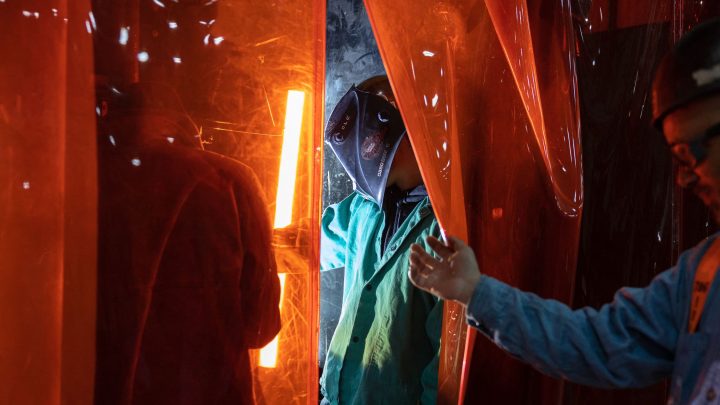
Biden administration invests $6 billion in low-carbon industrial production
Biden administration invests $6 billion in low-carbon industrial production

The Joe Biden administration is using public policy to boost the supply of and demand for clean energy. On Monday, the Department of Energy announced $6 billion from the Inflation Reduction Act and Bipartisan Infrastructure Law to fund several dozen projects meant to help decarbonize the industrial sector and reduce the cost of environmentally friendly manufacturing.
That includes the production of iron, steel and cement; food and beverages; and glass, paper and chemicals. The DOE emphasized that these industries generate a lot of emissions and are hard to decarbonize.
Making cement, steel and glass requires a ton of energy. Normally, much of that energy comes from fossil fuels. But Joe Shapiro, an environmental economist at the University of California, Berkeley, said that’s not the only reason these industries generate a lot of carbon emissions.
Take cement. “Cement is basically cooked limestone mixed with some other materials. And this is a little bit nerdy, but the chemical formula for limestone is CaCO₃. And you notice that ‘C’ in the middle? That’s carbon,” Shapiro said.
He said when you heat limestone to make cement, that carbon is released into the atmosphere.
“Around half of the greenhouse gas emissions from manufacturing cement are from the carbon built into limestone, and not from energy or burning fossil fuels,” he said.
So even if you were able to transition fully to using renewable energy to make cement, “you would still have a lot of greenhouse gas emissions because that carbon is built into the limestone,” Shapiro said.
Some of the projects the Department of Energy is funding are focused on making cement with something other than limestone. And new ways to make steel, too, without coal.
“It really is redesigning an industrial process,” said Steven Nadel at the American Council for an Energy-Efficient Economy. That’s challenging, he said, but critical for the environment and the economy.
“About a quarter of U.S. carbon dioxide emissions come from industry, whether it’s cement and concrete, chemicals, aluminum, steel,” he said.
Realistically, said Barbara Kates-Garnick of the Fletcher School at Tufts University, private industries aren’t going to invest enough in decarbonizing on their own.
“They see huge risks, they see huge investment,” Kates-Garnick said. “You need to have government funding in all of this.”
There’s a lot happening in the world. Through it all, Marketplace is here for you.
You rely on Marketplace to break down the world’s events and tell you how it affects you in a fact-based, approachable way. We rely on your financial support to keep making that possible.
Your donation today powers the independent journalism that you rely on. For just $5/month, you can help sustain Marketplace so we can keep reporting on the things that matter to you.

















